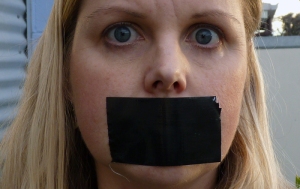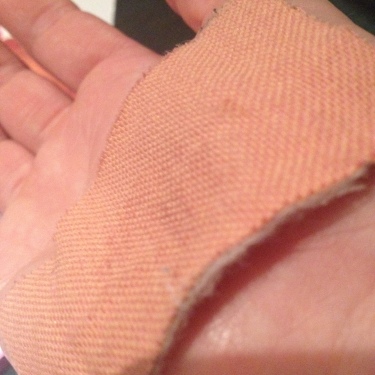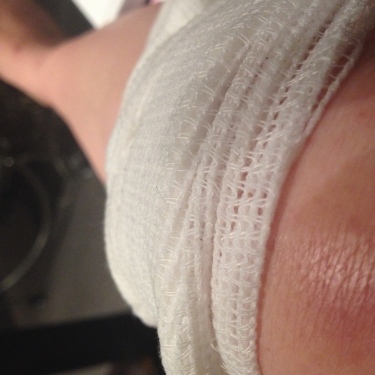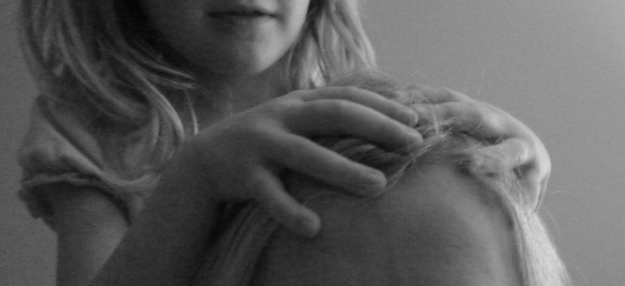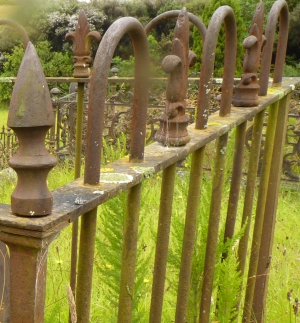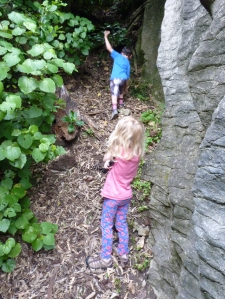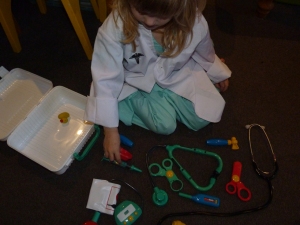This is not perhaps a post about what you think it is. But for the males in particular who may have interest piqued DO keep reading.
While it may be nothing to do with sexual dysfunction this is an important post. Important for the way especially we treat women (and men) and so frequently treat children.
While we may often relate the word impotency to a complete failure of sexual power, impotency in its broadest sense is so much more. It is a state of reduced or absent power, helplessness, unpersuasiveness and ineffectiveness.
Believe me, it’s not a nice state to be in, especially for a prolonged period of time.
I previously wrote about how challenging it can be to embark on something new like a change of job or even becoming a parent, especially when change has been imposed on us.
I outlined that my academic position was proposed to be disestablished in the broad scale restructuring of the university where I work. When I last wrote I was some nine weeks into limbo-land, waiting to hear my definitive fate.
I am now 30 weeks down of gestating my impotency and much like a pregnancy, I’m hopefully expectant that I’ll give birth to a more potent state in eight more weeks on 1st December. That’s when I leave my present position.
The act of closure, of turning a page to the next chapter begins.
Despite my best efforts and the hard work of so many around me, the mass of submissions to save my position and even morph my current position instead into something needed and innovative made no difference.
Way back at the end of May I learned my position was definitely going, in a meeting that started with “It’s quite clear you are an outstanding lecturer but on that basis we can’t retain you”. The rest of the meeting was similarly depressing and full of WTF moments- the excellent, valid points we made appeared to fall on ears wide shut.
As perhaps the only afflicted academic in my institution presenting an incredibly well supported alternative solution, it has been especially hard.
To never be able to engage in discussions about what we thought was a true win-win scenario has been cruel & wasteful.
To be left without a voice. To be yelling, to be fighting and to have no one listen.
To do my best to trust those in a position of power over me and to believe that this was a process of genuine consultation.
To feel instead unsupported by my institution throughout this process, although that is not to say I did not have colleagues in support of me. In the main though as explained previously, the emotional support and empathy I so desperately needed in 30 draining and wasted weeks was lacking at work, or elsewhere.
To feel unacknowledged.
It’s been a horrible, long process, poorly conducted, lacking in good communication and true leadership.
For those that would expect a swift resolution after the final outcome was released sadly no, the eternal limbo land continued with a farce of looking at redeployment options.
And then nothing for weeks.
Until we have finally come to this closure point.
In amongst this though, there’s been a bullying email by a colleague, which said among other things “sort your bloody life out”, reminiscent of an authoritarian parent talking to a teenager.
Complaint laid, no response, follow-up, no response. Nothing after months.
And now there never will be. Assailant free to do it again to someone else.
There’s been feelings of intimidation, questions I have asked that sit now permanently remain unanswered.
There’s been a lack of real acknowledgement of the distress and stress that have been my world.
I could never adequately put into words what my year has been like. And no one unless they have been in an incredibly similar situation of this magnitude could begin to understand.
I can sum it up best as demoralising and feeling so impotent. That word.
What does such a protracted state of impotency do to a person? It lowers self esteem, it escalates the imposter syndrome.
It exhausts and takes away the fight because faced with non-listening ears, tenacity is simply not enough.
It leads to cycling backwards and forwards at each stage through the grief cycle.
It obviously places one under a large amount of stress. That has had for me the resulting effect of weight gain, not due to eating more, rather less, but because those stress hormones are screaming out to the body to keep stocking up for this danger that will not dissipate.
It lowers the immune system’s ability to combat infection. I’ve had many more illnesses this year, including severe asthma and an atypical migraine presenting like a stroke and putting me in hospital.
It leads to anxiety, especially in social situations because in my case basal stress levels are elevated and what would normally be an imperceptible rise in stress when placed in a social situation is now very much registered with adrenaline coursing. For an extrovert, this is bizarre.
It leads to difficulty thinking, concentrating and performing tasks.
Impotency and parenting
What has outlining the incredibly challenging and demoralising year I have had got to do with parenting? The situation I have outlined above sounds extreme and it is, but many parents who adopt a certain style of parenting, authoritarian in nature, impose somewhat similar situations on their children.
No matter what our age, we want to be heard, to be listened to, to be respected as a human being. When we don’t find ourselves in that space, whether adult or a toddler, there are negative impacts.
When children experience similar sorts of situations the outcomes for them are no different than what I described above.
Children trust in adults that they are being loved and looked after, that their best interests are in place. Parents sadly don’t always treat their children with the respect our little people deserve.
The first step in dealing with a meltdown is for the child to feel safe enough (often in loving arms) to be able to freely express these big feelings children have and secondly to then have those feelings acknowledged.
The same goes for babies who communicate their needs by crying and especially need the loving arms of parents. Little does not mean insignificant.
When children are hurt or upset, this acknowledgement is essential, no matter if it seems ridiculous to the parent. Whatever the upset, it certainly isn’t trivial to the child.
To achieve this putting yourself in the place of your child and trying to see it from their perspective is important. And being the bigger person, not through power over your child but rather control of yourself and your own emotions will help both of you through the situation.
Making fun of a child for a ‘trivial matter’ and their big feelings is never ok- that shames and humiliates them. Shame also results from feelings not being listened to.
Shame though is the most destructive emotion in terms of an individual’s sense of value and self-worth because it is typically the most obstructed and hidden emotion. But shame when appropriately handled is important as it provides the weight for morality in our society.
An approach of acknowledging feelings first doesn’t mean that children get the ultimate say but rather shows them what they need to know-that they are valued.
For anyone in distress or under stress the best acknowledgement is often agreeing the situation is not ideal- for example provide the empathy they require and validate their feelings by saying “I can see that you have some big feelings about X…. etc”.
Too many of us however, skip over this emotional support that is the essential first aid, regardless of whether we are dealing with adults or children, because most people find it difficult dealing with feelings. And usually this difficulty is because of the way we were treated as children.
Frequently we skip straight to providing solutions or worse we either dare to make light of a situation by telling the child how they feel “You’re all right, you’ll be fine” or we deny them the opportunity to have feelings and shame them, “Don’t be ridiculous, it’s only a….” (so similar to “sort your bloody life out isn’t it?”), or “It’s not that bad”, or else we distract them “Wow there’s a rubbish truck going past”.
The second we do any of these things we are invoking a state of impotency in our child (or our friend, or our relative or our colleague). We are giving a clear signal they and their feelings are not valued and that they do not have a voice. This is invalidation.
The child in a state of distress is clearly signalling it has unmet emotional needs. This may not always be indicated by crying. Perhaps a child is biting, hitting, engaging in other destructive behaviours, being defiant or generally what might be described as ‘badly behaved’. Applying empathy or emotional support is actually the key to turning any of this behaviour around.
Many parents sadly think their children shouldn’t have a voice, that they must be controlled in a desire to have obedient teenagers and outstanding adult citizens. It might be tempting to use more authoritarian methods such as “Time-out” or threatening behaviour or telling the child how naughty they are in an effort to control.
Invalidation however, as I outlined above has a destructive effect on mental health and wellbeing and these negative impacts can be lifelong, especially in children.
Thus, authoritarian approaches may have the converse effect because rather than connecting, disconnection results as the child’s unmet needs are not being dealt with.
What place or space is there for a child to contribute their ideas? Toddlers and preschoolers who perhaps think of an alternative plan for something, need the opportunity to express their opinion and to have it genuinely considered.
Considered need not necessarily equate to agreed with by the parent. However, we are less likely to share our stories with those that don’t listen. When that happens, meaningful communication is lost and relationships get destroyed.
In order to be heard therefore, we first need to listen. Building trust through the act of active listening, acknowledging feelings and demonstrating empathy is how to achieve this. We need to give our children the space to be allowed to complain as this actually helps them and us work through their emotions and develop emotional resilience.
As clinical psychologist Colby Pearce says “for our own sakes and the sake of all we come into contact with, we need to get better at listening, understanding, accepting and respecting. Only then can we expect to be heard”
When we muck up as parents, for example in say unnecessarily snapping at our child, or shutting down their right to speak, taking the time to revisit the situation and acknowledge their hurt by apologising and providing an opportunity to listen will do restorative wonders. And it models important skills such as empathy we all want to foster in our children.
It might be tempting to think that acknowledgement of feelings is pandering to a child and allowing manipulation of the parent, but ensuring active listening and empathy as a response isn’t a promotion of permissive parenting nor a case of a lack of limits where they are needed as these equally make children feel unsafe. It is simply a matter of treating children as we would want to be treated ourselves.
We as parents need to also find the space in these situations to deal with our own feelings arising from our childhood, our experiences of having unmet emotional needs and shame leading to a feeling that we must also shut down the emotions of our children. If we want our children to be emotionally intelligent we need to spend time fostering our own empathy skills.
Final thoughts
I’m super tough and I will survive. Once I find a new job that suits and nurtures me, I’ll be rejuvenated but I will still bear scars. For me sharing this story has been a continuation of my step towards healing, of turning this experience into something positive. Rather than being hard, writing this post and re-finding my voice has been empowering.
I’m committed to using my experiences to better listen to and understand others, either directly, or in this post by helping others foster their empathy and listening skills too.
Our children though are more vulnerable than my adult state. “I was raised this way and it hasn’t done me any harm” may be a common phrase but it’s simply not true and nor should it be any form of a mantra to live by. No parent wants to see their child scarred and this should be as true of emotional harm as it is of visible damage.
Despite a horrific year I am blessed. I receive the validation every day that I am doing a decent enough job with MissBB. Every single day she does something nice for me, whether it’s giving me a special card or wrapping up a special ‘gift’ for me from objects in the house, painting something beautiful (like rainbows with pots of gold), passing me her last bite of her favourite food, or a super hug and kisses. And she makes me choose her stories every night.
And every time she does one of these gestures she explains why: “I’m doing this Mummy because you’ve lost your job”. With incredible empathy skills like that she will provide the right emotional support to those that need it as she grows.
Let our children have their voices. Let them gradually and with love become potent, not impotent. They are our future.
My Ice Doctor science blog post on the loss of my position can be found here.

